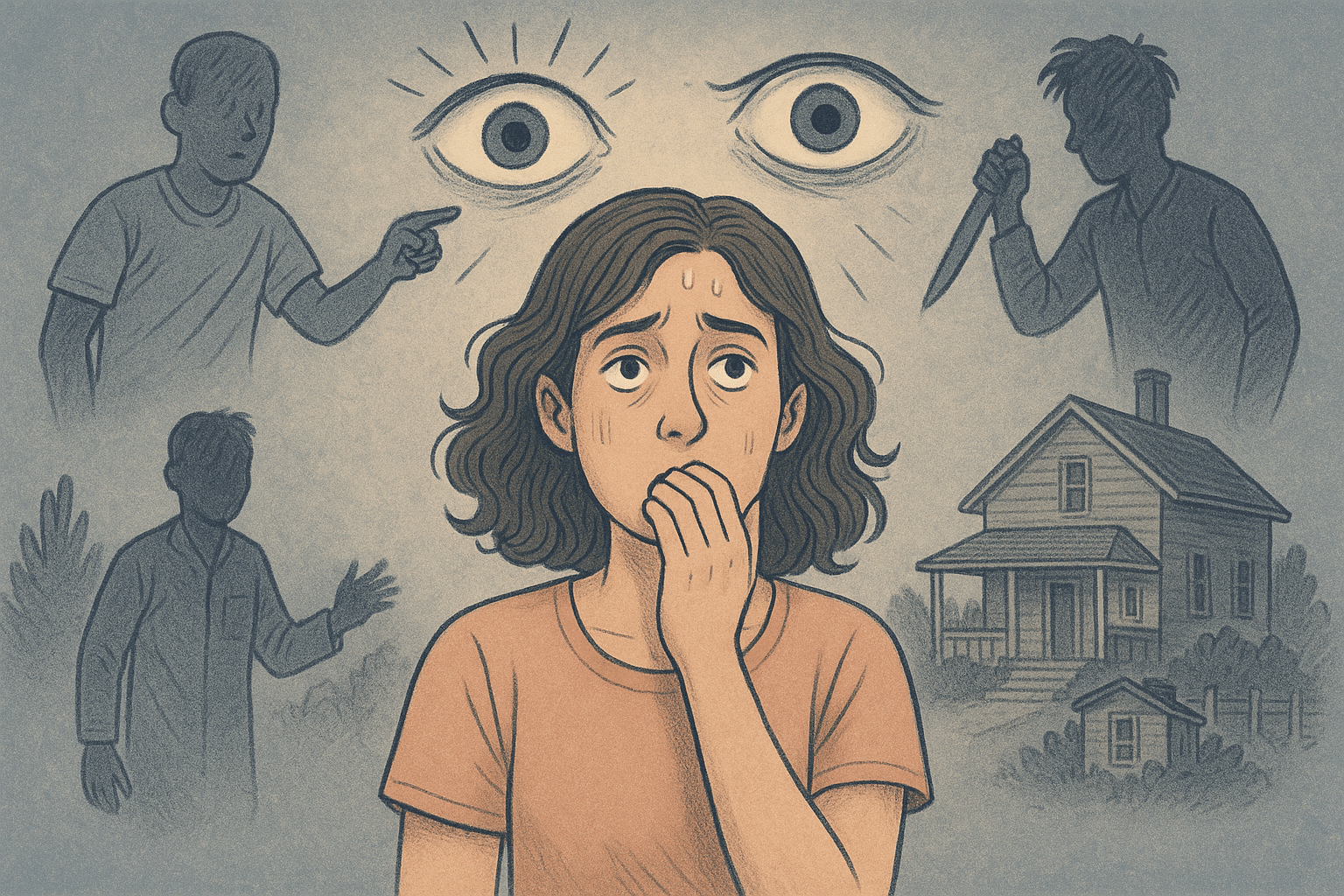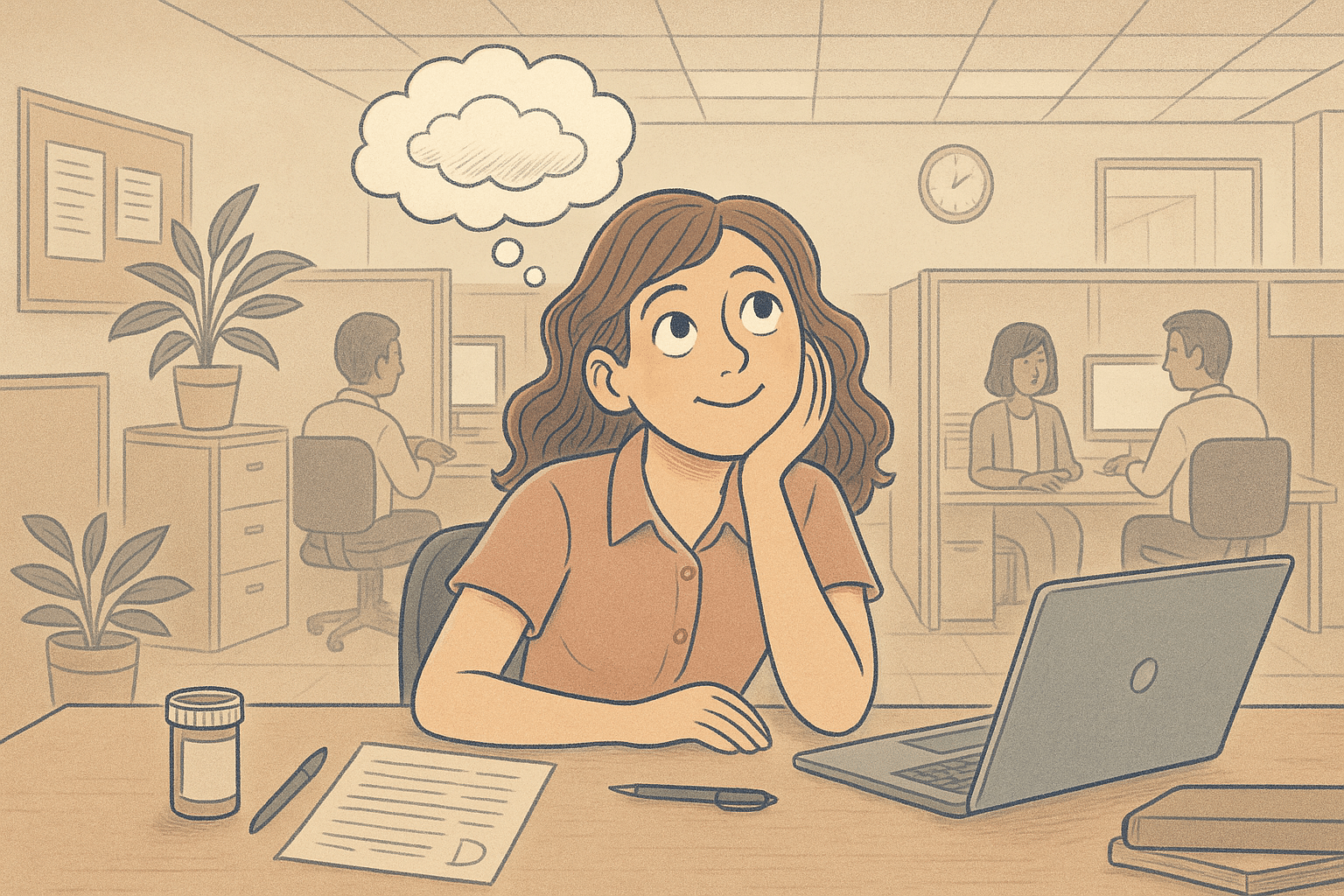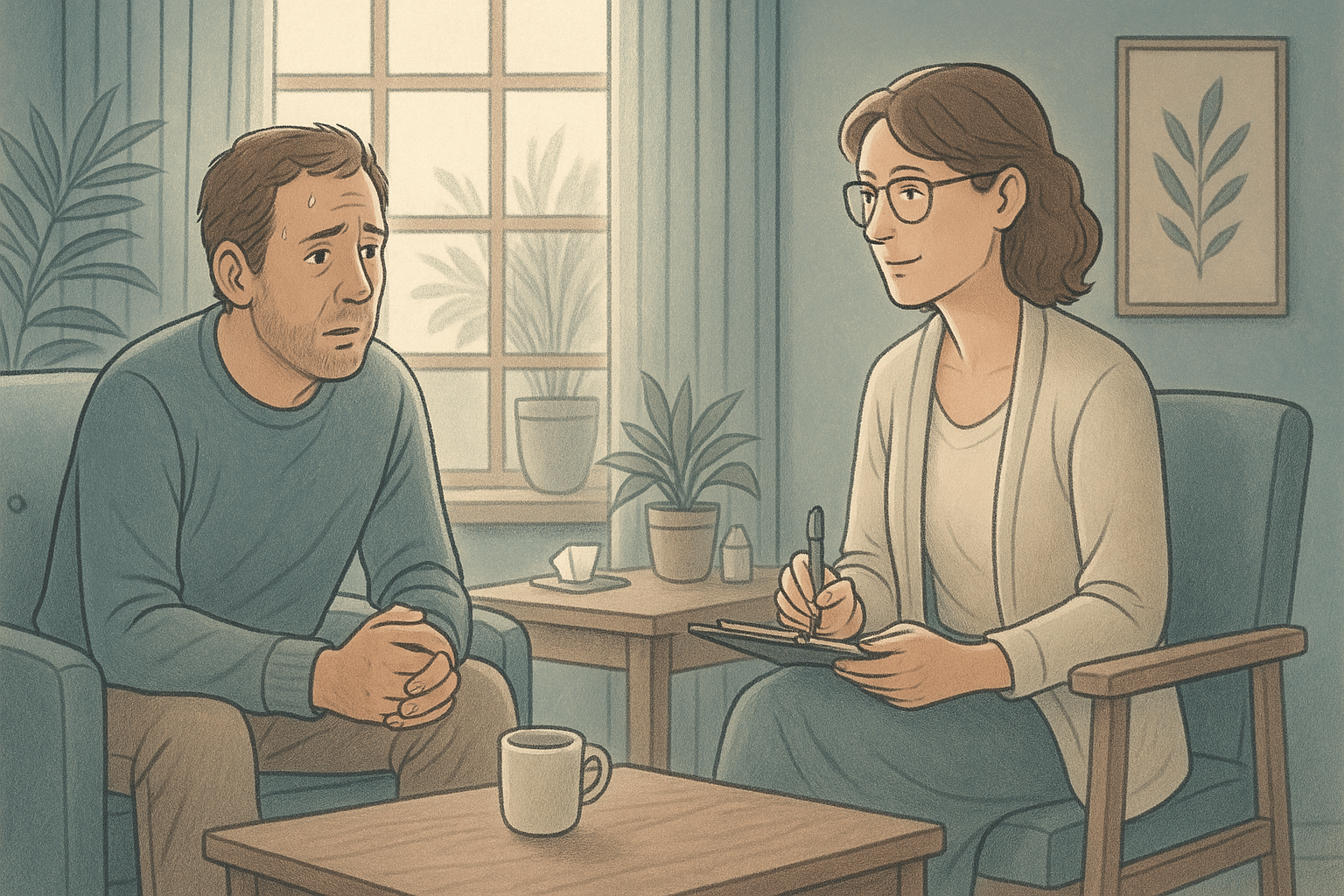Key Takeaways
- Schizoaffective disorder combines symptoms of schizophrenia and mood disorders, making early recognition crucial for proper treatment and management.
- Early warning signs often include a combination of mood disturbances (depression or mania) alongside psychotic symptoms like hallucinations or delusions.
- Social withdrawal, declining performance at work or school, and difficulty maintaining relationships can be important early indicators of schizoaffective disorder.
- Understanding the difference between schizoaffective disorder and similar conditions like schizophrenia or bipolar disorder is essential for proper diagnosis and treatment.
- A Mission For Michael (AMFM) provides specialized schizoaffective disorder treatment combining evidence-based therapies, medication management, and holistic care across California, Minnesota, and Virginia.
Recognizing Schizoaffective Disorder
Schizoaffective disorder remains one of the most misunderstood mental health conditions, often overshadowed by more commonly discussed diagnoses like schizophrenia or bipolar disorder.
Schizoaffective disorder uniquely combines symptoms of schizophrenia (like psychosis) with mood disorder symptoms (depression or bipolar-type symptoms). What makes this condition particularly difficult to identify in its early stages is that these symptoms may not appear simultaneously or with equal intensity.
If you or someone you care about is experiencing unusual changes in thinking, perception, or mood that can’t be easily explained, it’s worth considering if these might be early indicators of schizoaffective disorder.
| A Mission For Michael: Expert Mental Health Care Founded in 2010, A Mission For Michael (AMFM) offers specialized mental health care across Southern California, Minnesota, and Virginia. Our accredited facilities provide residential and outpatient programs, utilizing evidence-based therapies such as CBT, DBT, and EMDR. Our dedicated team of licensed professionals ensures every client receives the best care possible, supported by accreditations from The Joint Commission and the California Department of Health Care Services. We are committed to safety and personalized treatment plans. Start your recovery journey with AMFM today! |
Mood Disorder Signs
1. Depression Symptoms
Depression in the context of schizoaffective disorder goes beyond ordinary sadness. It involves profound emptiness, hopelessness, or despair for weeks or months at a time before other symptoms appear.
This persistent low mood is frequently accompanied by loss of interest in previously enjoyable activities, feelings of worthlessness, and sometimes thoughts of death or suicide.
What distinguishes these depressive symptoms as potential indicators of schizoaffective disorder is their co-occurrence with subtle cognitive changes, like difficulty organizing thoughts or mild paranoia, that aren’t typically part of major depression alone.
2. Manic Episodes
For those who develop the bipolar type of schizoaffective disorder, early manic episodes can be among the first noticeable signs. These periods are characterized by abnormally elevated mood, decreased need for sleep, and unusually high energy levels that persist for days or weeks.
The individual might engage in impulsive behaviors like excessive spending, risky sexual activity, or making grand plans that are out of character. These early manic episodes are particularly concerning when they’re accompanied by unusual thought patterns, like racing thoughts that begin to lose logical connections or grandiose ideas that have elements of unreality to them.
3. Mood Swings

Unpredictable and severe mood fluctuations often appear early in the development of schizoaffective disorder.
Unlike the normal emotional ups and downs everyone experiences, these mood swings occur without obvious triggers and can be extreme, shifting from deep depression to agitation or euphoria in short periods.
Family members frequently report being confused by these seemingly inexplicable emotional changes. The distinctive feature of these mood swings in early schizoaffective disorder is that they may occur alongside subtle perceptual changes or unusual thinking patterns that hint at the psychotic symptoms to come.
Psychotic Symptoms
4. Hallucinations
Early hallucinations often begin as minor perceptual disturbances. Hearing your name called when no one is there, seeing shadows or movement in your peripheral vision, or experiencing unusual sensory phenomena like feeling bugs crawling on your skin.
These experiences might be brief and infrequent at first, causing the person to question them but not necessarily seek help. As the condition progresses, these hallucinations typically become more complex and distressing. Auditory hallucinations (hearing voices) are particularly common in schizoaffective disorder, often beginning as whispers or muffled sounds before developing into distinct voices that may comment on the person’s behavior or thoughts.
5. Delusions

Early delusional thinking often begins as suspiciousness or overvalued ideas rather than fully formed false beliefs.
The person might feel that others are watching them, talking about them, or have hidden motives. These thoughts differ from everyday worries about what others think because they persist despite evidence to the contrary and gradually become more fixed.
We’ve noticed that early delusions in schizoaffective disorder often have themes related to the person’s mood state, paranoid beliefs during depressive episodes or grandiose ideas during manic phases. You may recognize these thoughts as unusual initially, but this insight typically diminishes as the condition develops.
6. Disorganized Thinking
Before obvious thought disorder develops, many individuals experience subtle changes in their thinking patterns. They may find it increasingly difficult to connect ideas logically, resulting in conversations that jump between unrelated topics or include unusual associations.
Friends or family might notice that the person’s speech becomes more difficult to follow, with sentences that trail off or ideas that don’t quite connect. The individuals themselves often feel that their thoughts are “getting jumbled” or that it’s harder to organize their thinking.
This cognitive disorganization typically worsens during periods of stress or heightened emotion, which can be an important early warning sign.
7. Unusual Behavior
Changes in behavior that seem out of character or difficult to explain often appear early in schizoaffective disorder. These might include new rituals or routines, odd mannerisms, inappropriate emotional responses, or eccentric dress.
The person might begin to express ideas or dress in a way that seems strange to those who know them well. For example, wearing multiple layers of clothing might be related to sensory disturbances or paranoid concerns.
Social and Functional Changes
8. Withdrawal
Progressive social withdrawal is one of the most common early signs of developing schizoaffective disorder. The person may gradually reduce contact with friends, participate less in family activities, or abandon previously enjoyed social hobbies.
This withdrawal often stems from increasing difficulty managing social interactions as cognitive and perceptual changes make these encounters more confusing or stressful.
9. Work or School Problems
Declining performance at work or school frequently precedes a formal diagnosis of schizoaffective disorder. The cognitive challenges of the developing condition; difficulty concentrating, problems organizing thoughts, and increasing distractibility, directly impact the ability to complete tasks efficiently.
This declining performance, especially in someone who was previously capable or high-achieving, should be considered a significant warning sign when combined with other symptoms.
10. Self-Care Decline
Changes in personal care and daily functioning often emerge gradually in the early stages of schizoaffective disorder. The person may begin neglecting hygiene, wearing inappropriate clothing, or having difficulty maintaining their living environment.
These changes typically result from a combination of factors, decreased motivation during depressive phases, cognitive disorganization making routine tasks more difficult, or altered priorities during manic or psychotic episodes.
When combined with social withdrawal and performance decline, deterioration in self-care is an important functional change that needs mental health evaluation.
Cognitive Warning Signs
11. Concentration Issues

Difficulty maintaining focus and concentration is frequently one of the earliest cognitive signs of developing schizoaffective disorder.
The person may find themselves unable to follow conversations, complete routine tasks, or absorb information from reading or watching television. This concentration problem differs from normal distractibility in its persistence and impact on functioning.
These concentration difficulties often lead to problems at school or work, as assignments take longer to complete and contain more errors than previously.
12. Memory Problems
Memory difficulties, particularly with short-term and working memory, commonly occur early in the development of schizoaffective disorder. The person might forget conversations, appointments, or recently learned information despite making efforts to remember.
They may rely increasingly on notes, reminders, or assistance from others to manage daily responsibilities. What distinguishes these memory problems from normal forgetfulness is their progressive nature and the person’s diminishing ability to compensate for them effectively. These memory challenges often contribute to increasing anxiety and self-doubt, as the individual recognizes changes in their cognitive abilities but doesn’t understand why they’re occurring.
When to Seek Help

Recognizing when to seek professional help for potential schizoaffective disorder is crucial for early intervention and improved outcomes.
We encourage seeking an evaluation if you or a loved one is experiencing any combination of the warning signs we’ve discussed, particularly if they persist for more than two weeks or cause significant distress or functional impairment.
Don’t wait for symptoms to become severe or debilitating, early treatment can prevent considerable suffering and disability. Trust your instincts if you sense something is wrong, even if you can’t precisely identify the problem.
The threshold for seeking help should be lower if there’s a family history of schizoaffective disorder, schizophrenia, bipolar disorder, or other serious mental health conditions, as genetic factors increase vulnerability. Similarly, if symptoms appear following significant life stressors, or traumatic events, professional evaluation is warranted promptly.
Recognizing Early Signs: Your Path to Recovery with AMFM

At A Mission For Michael treatment facility, we’ve dedicated ourselves to transforming the healing process for complex mental health conditions like schizoaffective disorder.
AMFM’s comprehensive approach addresses both the psychotic and mood components of schizoaffective disorder through evidence-based therapies, specialized medication management, and holistic care practices.
With treatment centers across California, Virginia, and Washington, we provide personalized treatment plans that recognize the unique way schizoaffective disorder affects each individual.
Our experienced clinical teams understand that early intervention is crucial, and we’re committed to providing the specialized care needed to help you or your loved one achieve lasting recovery and improved quality of life.
With proper identification and intervention, individuals with schizoaffective disorder can reclaim stability and build meaningful lives.
Frequently Asked Questions (FAQ)
What age does schizoaffective disorder typically appear?
Schizoaffective disorder most commonly emerges in early adulthood, with the average age of onset being in the late teens to early thirties.
We’ve observed that the bipolar type of schizoaffective disorder often appears earlier (late teens to mid-twenties) than the depressive type, which may develop in the mid-twenties to early thirties.
However, understand that symptoms typically develop gradually over months or years before reaching the threshold for diagnosis.
Is schizoaffective disorder hereditary?
Schizoaffective disorder does have a genetic component, though it’s not inherited in a simple or predictable pattern.
Research indicates that having a first-degree relative (parent, sibling, or child) with schizoaffective disorder, schizophrenia, or bipolar disorder increases the risk of developing the condition.
How is schizoaffective disorder diagnosed?
Diagnosing schizoaffective disorder is a complex process that requires comprehensive evaluation by psychiatrists or clinical psychologists with expertise in serious mental illness.
The diagnostic process usually includes detailed clinical interviews with the patient and, when possible, with family members who can provide information about symptom development and progression.
How is schizoaffective disorder different from schizophrenia?
The primary distinction between schizoaffective disorder and schizophrenia lies in the prominence of mood symptoms.
While both conditions involve psychotic symptoms like hallucinations, delusions, and disorganized thinking, schizoaffective disorder also includes significant mood episodes (depression, mania, or both) that meet criteria for major mood disorders.
In schizophrenia, mood symptoms may be present but are less prominent and don’t meet full criteria for a mood disorder, or they occur only briefly during psychotic episodes.
Can schizoaffective disorder be treated effectively?
Yes, schizoaffective disorder can be treated effectively with a comprehensive approach that addresses both the psychotic and mood components of the condition. At A Mission For Michael, we implement multi-faceted treatment plans that include medication management, evidence based therapies and lifestyle changes, customized to each individual’s specific symptom pattern, severity, and life circumstances.












